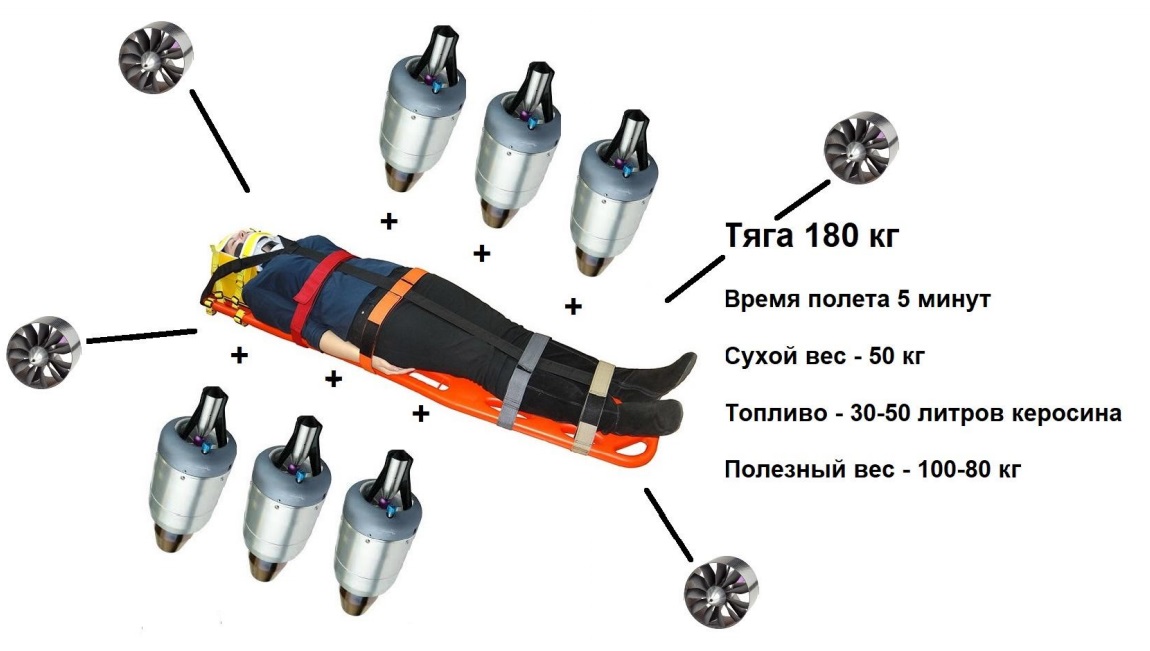
Since I have already been inundated with the news that British paramedics are using a jetpack , I will post a short description of last year's project.
In October 2019, the CopterHack hackathon was held in Moscow, where I decided to visit with my turbojet engines with the hope of hunting a couple of smart, young and promising engineers. At first, the "youth" reacted violently to the jetpack, and then said: "Damn, this has to be done, six months or more, and we want to win the hackathon, we won't help you."
As a result, in 2 days we made a dimensional model of a hybrid (turbojet-impeller) rescue vehicle for emergency evacuation in hard-to-reach areas. The jury was twisted at the temple.
I invite you to get acquainted with slides and options for ideas and discuss the possibilities of rescue systems in the comments.
Subscribe to the Jetpack School channel for training pilots and jetpack engineers.
Since many were generally "not in the subject" that turbojet platforms exist, I had to tell and convince by the example of foreign colleagues.
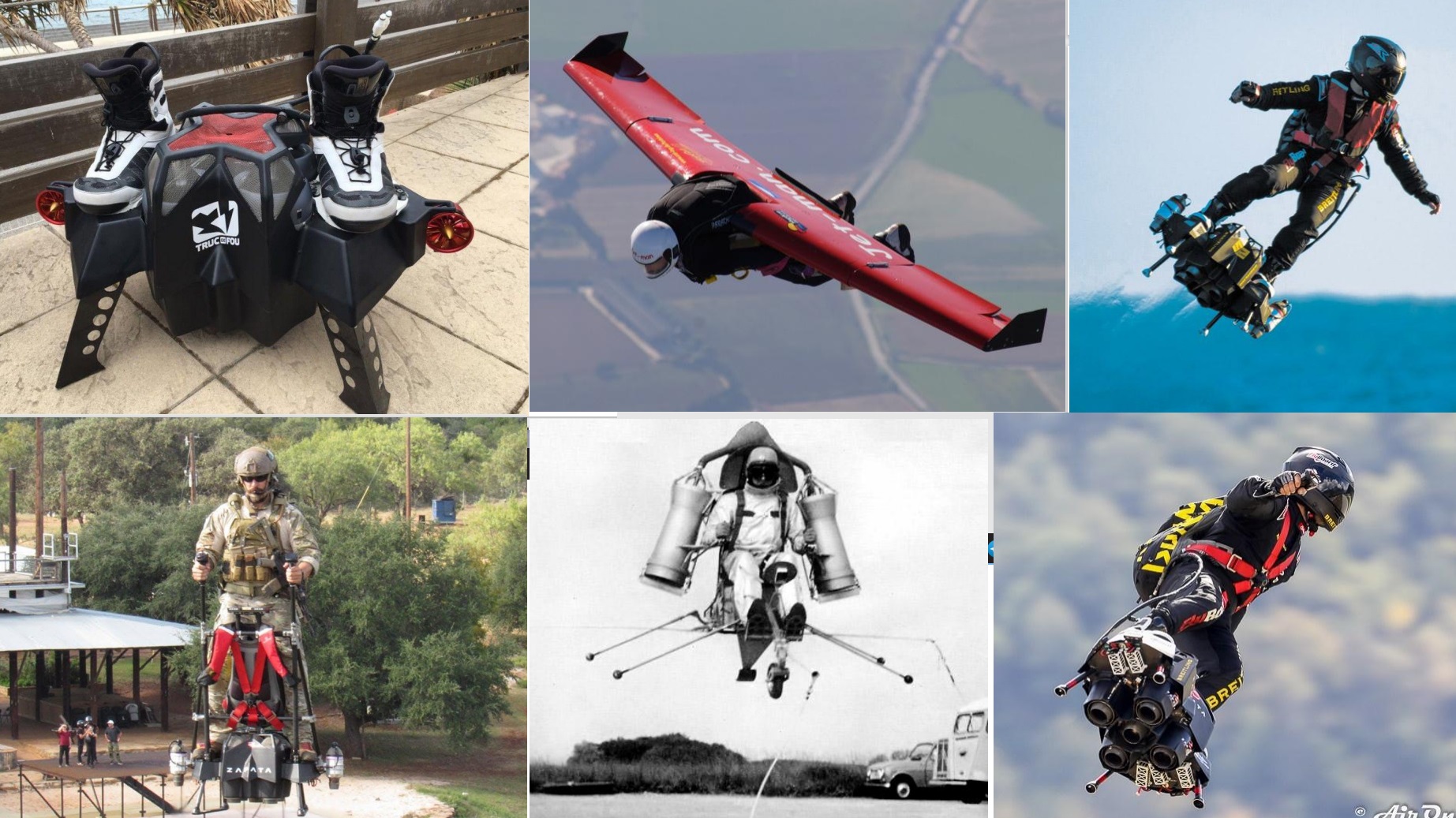
Aircraft of the French, Swiss and NASA.
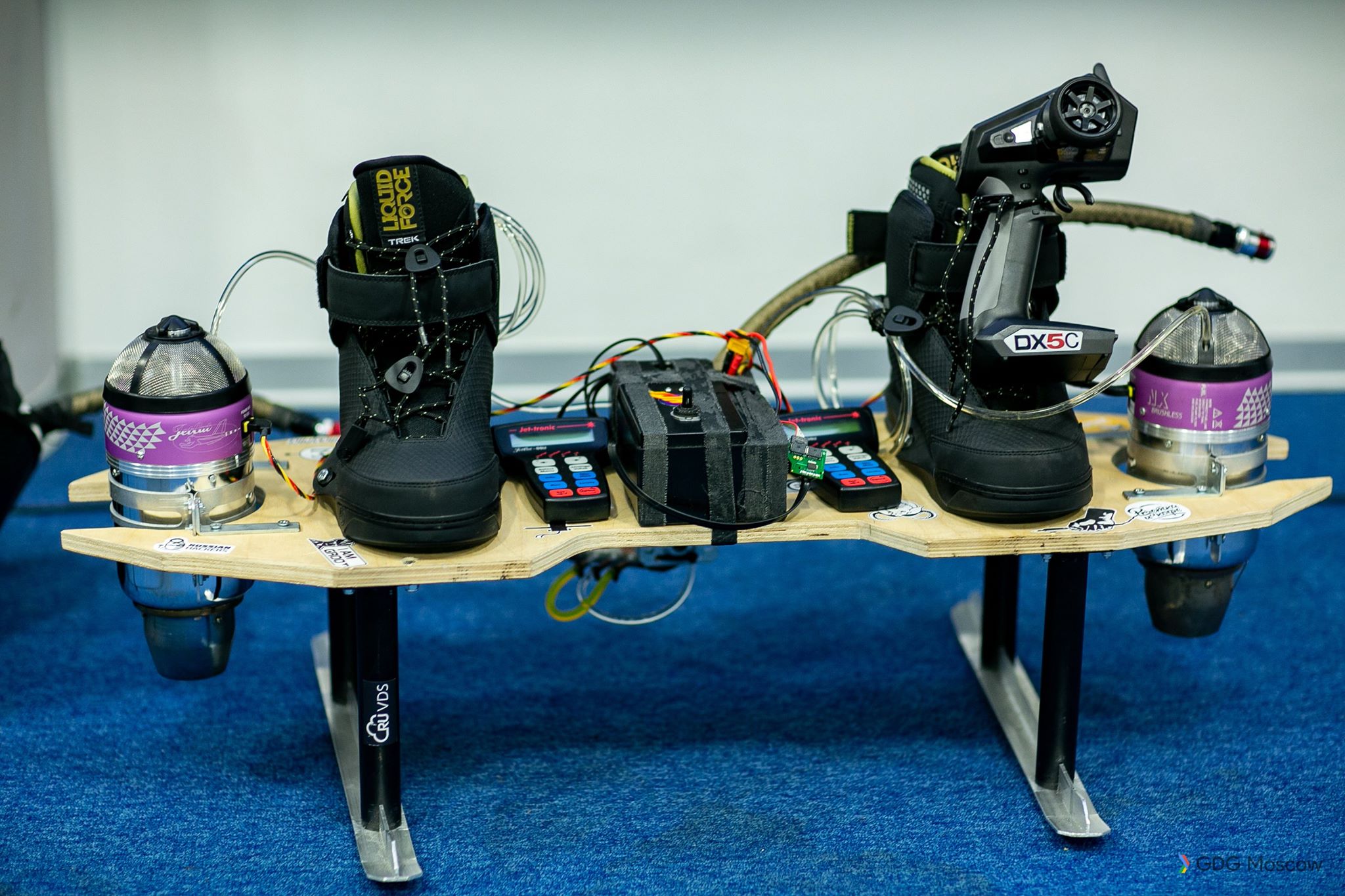
The first working prototype, which we launched in front of the American Embassy in October 2018.

At the time of the hackathon, we no longer had 2 engines with a thrust of 18 kg, but 2 engines with a thrust of 30 kg each, they decided to take them as a basis for creating a "cruise battery".
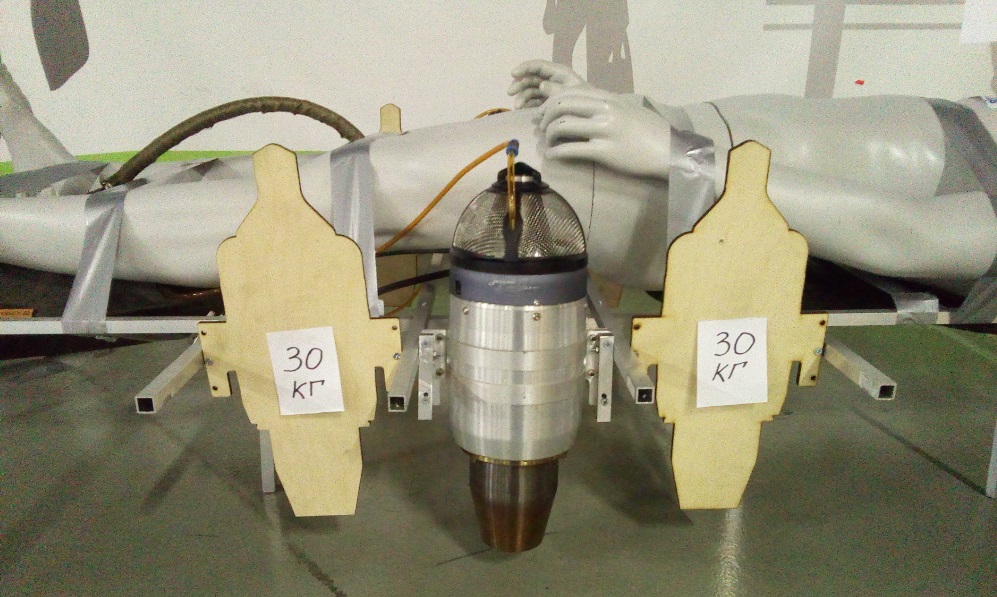
We cut the missing 4 engines out of plywood.
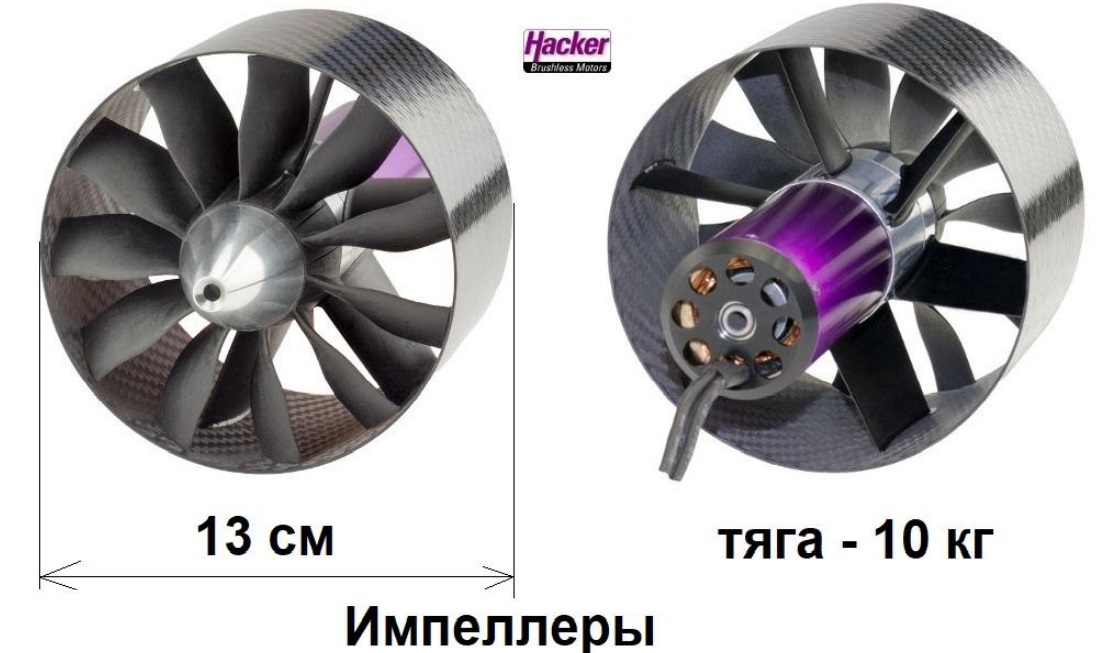
We came up with the idea of stabilizing with impellers on the shoulders at the corners. Impellers are nimble and react quickly to control signals. On their basis, you can assemble an automatic stabilization and control system.
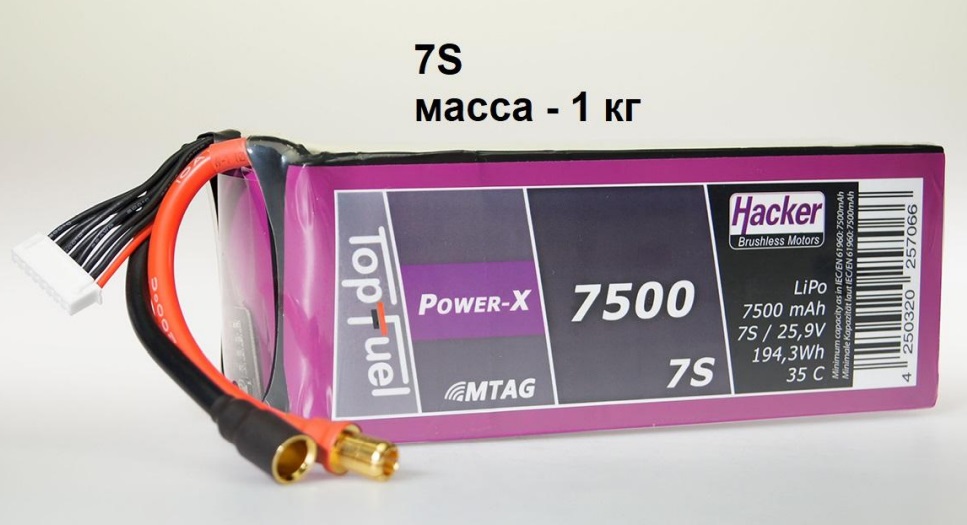
Batteries for the price of a domestic car.
But the impellers weren't that simple - they also needed a controller, a battery, and wrist-thin wires.
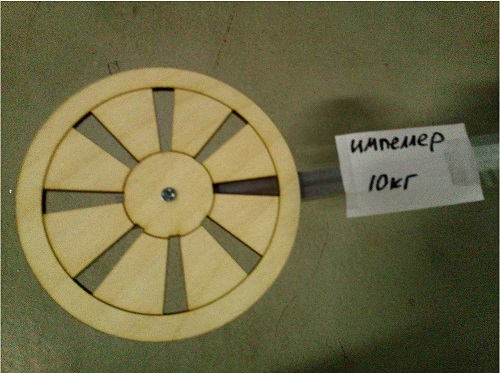
We did not have impellers; we also cut out their models from plywood.
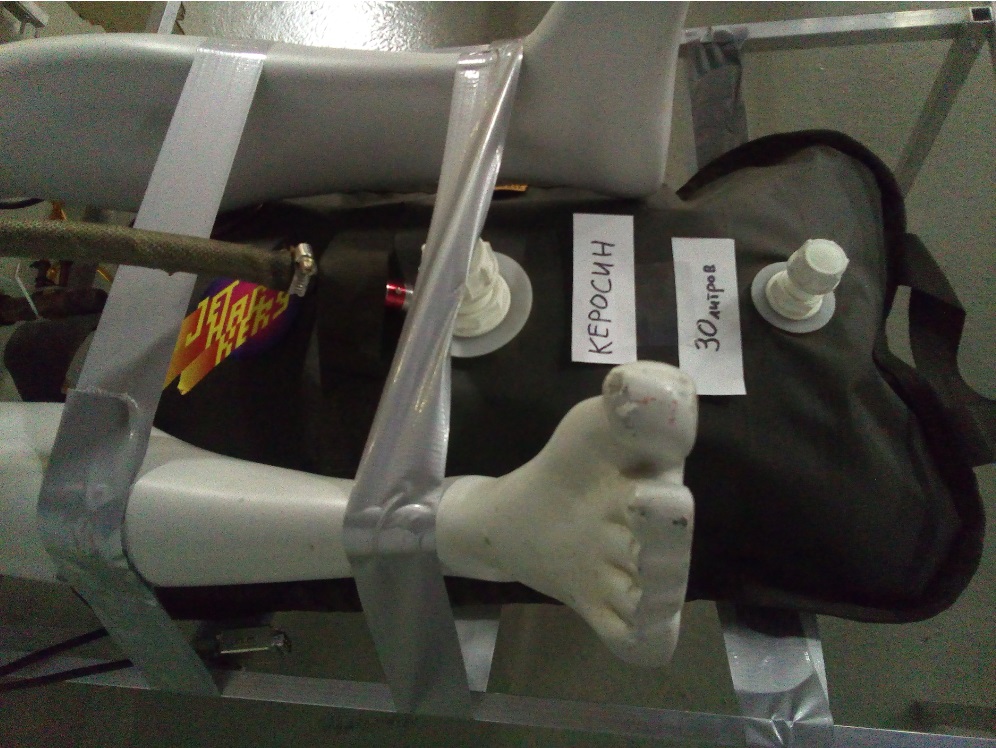
Flexible tank with kerosene.

Schematic diagram of a jet stretcher.
The mass of one turbojet engine is 3 kg. (6 pieces - 18 kg)
Weight of the impeller - 1 kg, batteries for it - 1 kg, controller - 1 kg. (4 pieces - 12 kg)
Weight of "stretcher" and structure - 5-10 kg.
Kerosene - 30-40 kg.
The thrust of 6 motors is 180 kg.
Fuel consumption: 1 motor - liter per minute, 6 motors - 6 liters per minute.
Flight time is 5 minutes.
Speed - up to 250 km / h.
As a result, 80-100 kg remain for the payload.
What happened in the end:
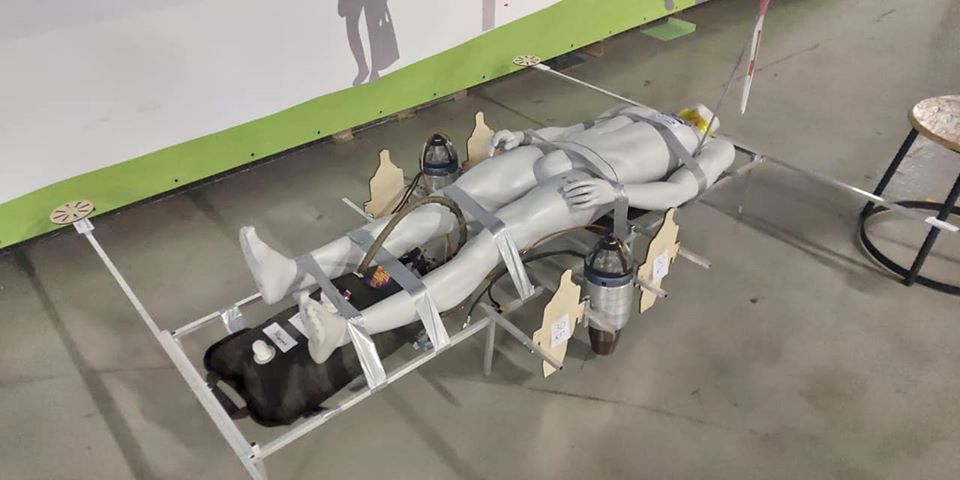
In principle, we could turn on this thing and hold it in our hands or on strings so that it does not break out. All propulsion electronics and fuel systems work. But then half of the children at the hackathon would be gray-haired.
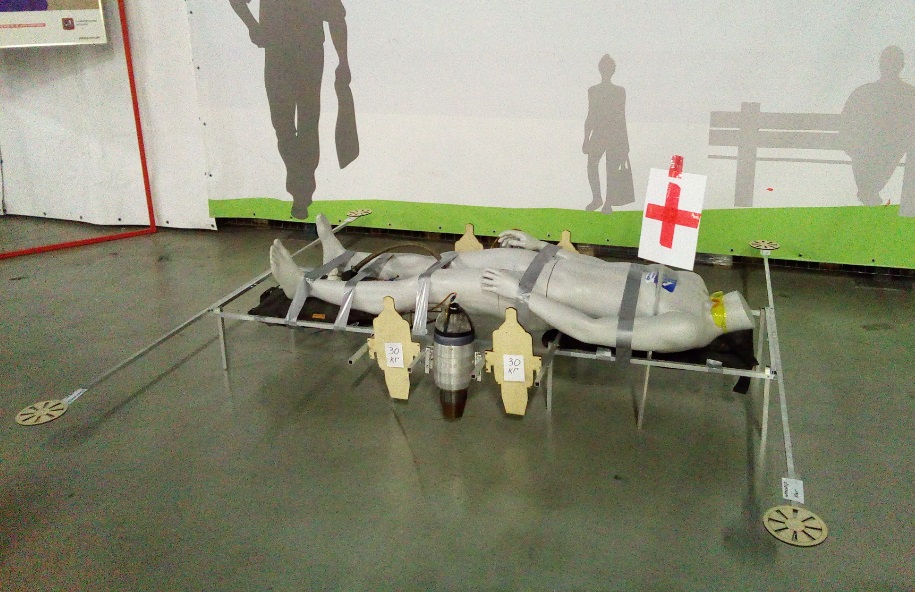
Usage scenario:
- drive an SUV or snowmobile as close as possible to the scene of the accident.
- pull the "jet stretcher" out of the trunk, mount the frame (5-10 minutes), connect the systems.
- either unmanned, we send to the victim if there is a paramedic next to him
- or we fly to the victim with a paramedic on board (1-2 minutes)
- we tie the victim to a "jet stretcher" and send him to an off-road vehicle / snowmobile (1-2 minutes)
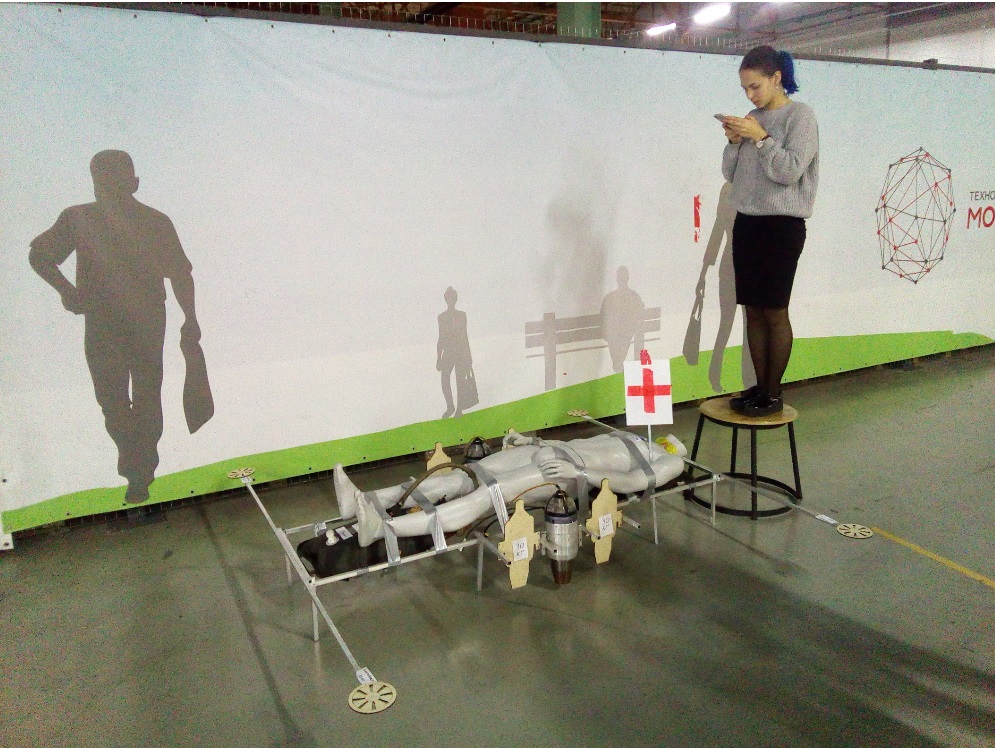
And yes, we carried out our design for the imperial march on floppy drives (thanks to the sound engineer for the insane performance).
PS
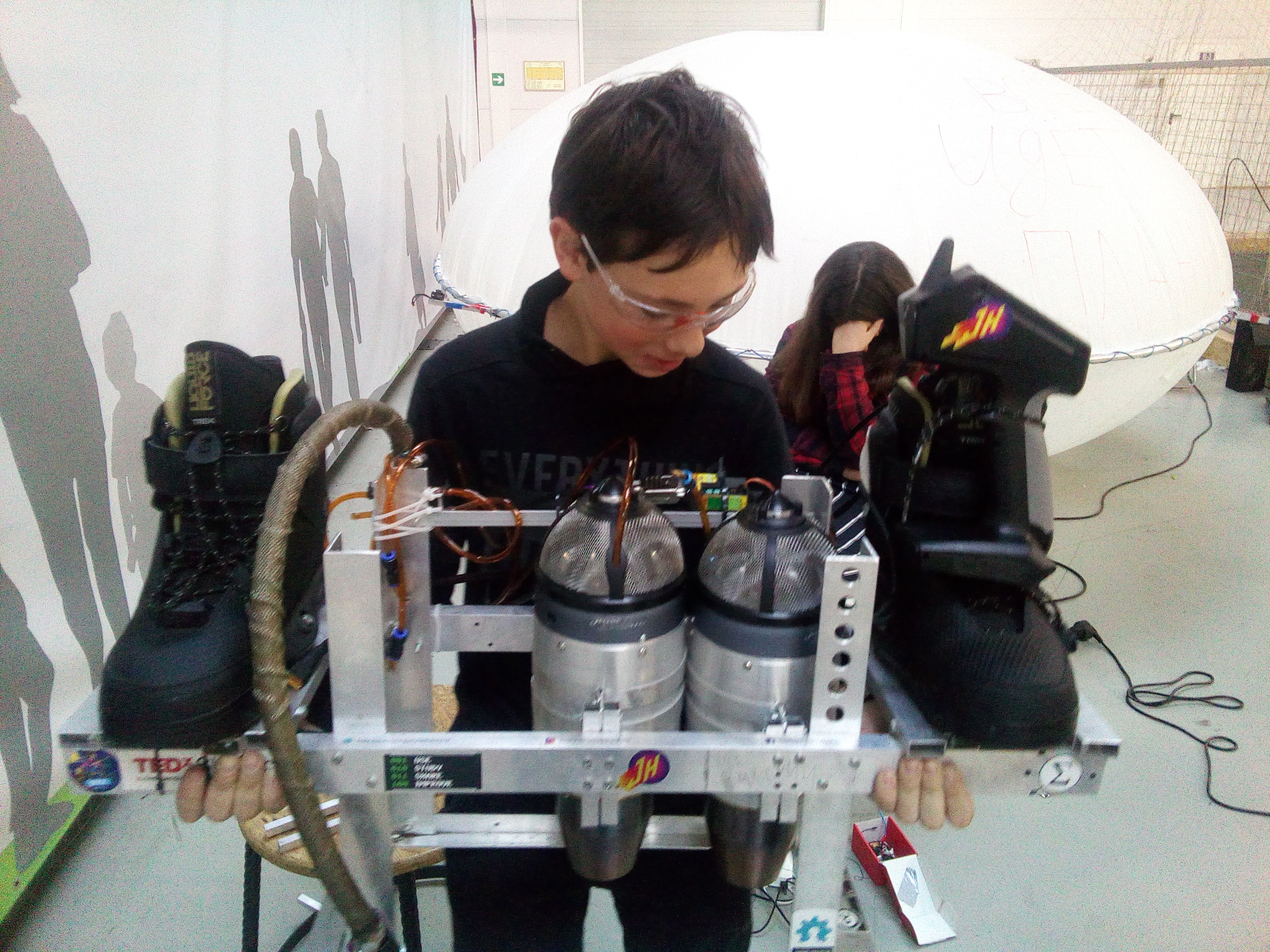
And this kid showed a superpower - he could read the manual and drill at the same time.
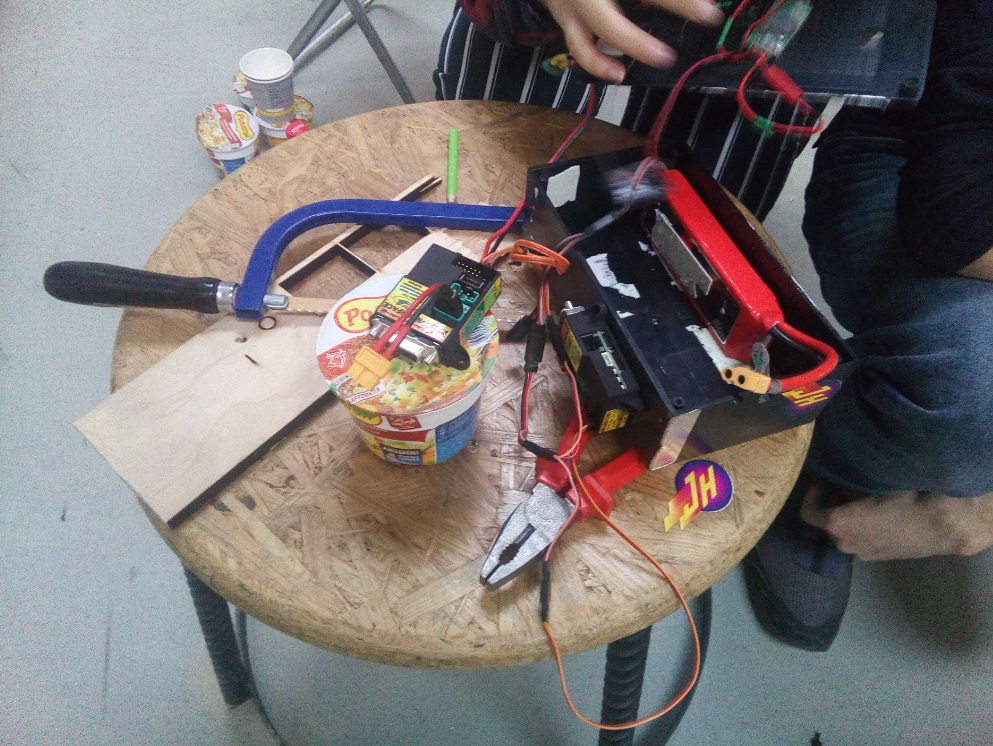
As you feed the electronics engineer, he will work.
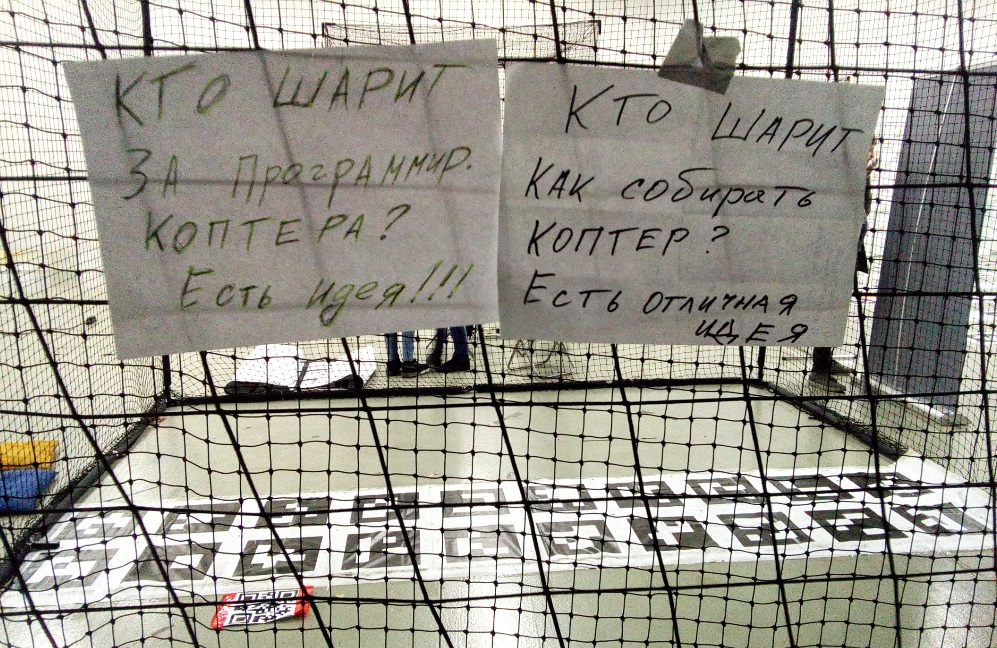
An attempt to hunt the programmer with improvised means.
PPS
Tentatively on October 11, I will be performing in the Neuron hackspace , you can touch the glands with your hands.
Subscribe to the Jetpack School channel for training pilots and jetpack engineers.